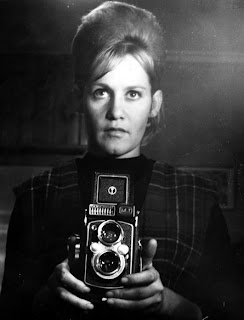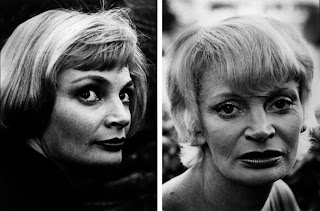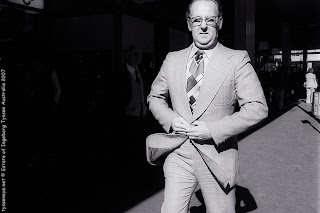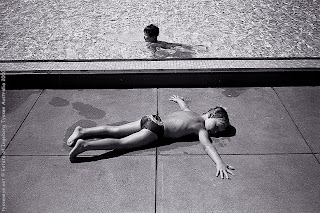This week’s blog is from elsewhere. Not where everyone else has gone this week. It isn’t from the HK Art Fair! This is a postcard from Gymea – in the Shire.
I went to the Hazelhurst Regional Gallery and Arts Centre on the Kingsway (can’t miss it – it is the main drag) in Gymea. I saw some great art – Australian photography; had an invigorating exchange of ideas and opinions with a colleagues; and ate well – no dumplings but stuffed figs, which were particularly fine. The only thing I didn’t do was shop. http://www.hazelhurst.com.au/
Hazelhurst evolved from an estate built up by Ben and Hazel Broadhurst and then bequeathed to the local community. It is now a well regarded part of the comprehensive network of small public galleries across NSW (& Australia) known as ‘regional galleries’.
In the 80s there was a real push to develop what were hobbyist/amateur art galleries into professionally managed, purpose built and well resourced public art museums whose collective mission was to collect, exhibit, educate and promote the visual arts to its local community.
In NSW the flavour of each gallery is determined by each community, rather than imposed on it. The catalyst was usually the result of a generous bequest (as in Hazelhurst), a donated collection (Orange Regional Gallery), an art prize (Tweed Heads Regional Gallery) or (eg)an energetic craft group (Tamworth Regional Gallery). The Local Council would get on board in an official capacity, allocating funding to fit-out gallery spaces to store/ exhibit artworks and employ professional staff. The potential for the gallery is dependent on the commitment of the Local Council and community, and the dedication of the gallery staff. It is a great way to tour country NSW: visit the local regional gallery and then swim a few laps in the local memorial public pool. For more info on the network check out www.mgnsw.org.au
It was a glorious day and Hazelhurst was pumping. Locals looking, talking, eating, creating – making thoroughly good use of their cultural centre. The relatively new gallery complex (opened in 2000) is on park-like grounds, with a snappy cafe and the original home of the Broadhursts. There is alot to get excited about this place. The complex incorporates studios for ceramics, printmaking, mosaic, drawing, painting etc; good exhibitions can be held in the purpose-built, versatile, functional gallery space. There’s a great cafe with good food, coffee and wine; an interesting shop with arty goodies and then, across the garden, the original cottage is being used for artists in residence, the Friends (official local volunteer support group), and an art library.
Two really good photographic exhibitions were in the main gallery space, each allotted a half, and sitting quite comfortably together. Both are surveys of two influential Australian women photographers Sue Ford and Ingeborg Tyssen. Both women died relatively recently and these two exhibitions firmly reinforce their legacies to contemporary photographic practices in Australia.
Time Machine: Sue Ford is a travelling exhibition, curated and organised by Monash Gallery of Art, Melbourne. www.mga.org.au Ford died recently, in 2009, but had worked with Monash curators to begin to develop this exhibition. The core here is her Self portrait series, in which she photographed herself throughout her life. The 47 self portraits start in 1960 and go through to 2008. The portraits are unadorned, direct and honest – holding true to her progress, her ageing. The series highlights an interesting (and what could possibly be described as as disciplined) focus in her work: that of people and their passages through time.
 |
| Sue Ford Self portrait 1961 |
 |
| Sue Ford Self portrait 2004 both images here Copyright B&E Ford. Courtesy of Monash Gallery of Art and the Artist’s Estate. |
The other great series in this survey is known as the Time Series and again, are great examples of the power of the photograph to capture change and memory. From 1962 to 1974, she photographed portraits of people – straight up, no props or fancy finishes – and then returned a few years later to do it again. Invariably her sitters were her friends, families, colleagues.
 |
| Sue Ford Lynn 1964-1974 images here copyright B&E Ford. Courtesy of Monash Gallery of Art and the Artist’s Estate. |
I think about Lynn here and wonder what happened in the decade between the portraits. A sadness and heaviness to her gaze in 1974 has replaced the perkiness and charm of 1964. Whereas Ford’s practice is politically charged, there is a poignancy to her personal reflections.
Ingeborg Tyssen: Photographs is the exhibition on the other side of the room. There is much said and written about Tyssen. This exhibition curated by Sandra Byron is a personal homage to a dear friend who died tragically young. There is an intimacy and warmth in the selection of works, the way they are hung and briefly described. It is very much a personal interpretation of her work.
 |
| Ingeborg Tyssen, from the People series – City Light 1977 courtesy and copyright the Artists Estate John Williams and Sandra Byron Gallery |
Tyssen’s people are not known to her, rather are studies of anonymous people: in action, in the city, at a fairground. The People series – City Light 1977 images reveal a sense of isolation in a crowd. People emerging from the dark shadows of the same station/ mall and march into the sunlight. They are expressionless, uncommunicative, isolated, yet display a keen sense of self and appearance. Mostly minding their own business, doing their own thing, they seem undisturbed by the female photographer standing nearby. She must not have been intrusive or demanding, just there with her camera at the ready.
Studies of kids in the Ryde pool series 1981, in their togs, jumping, splashing, sunbaking, wonderfully capture their sheer joy in the water. They are oblivious to Tyssen and her camera. She’s found the wetness of the pool, the delight of the water, the warmth of the concrete. There is a gorgeous image of wet togs which is sublime: the way the togs could stick and bubble over the crevices and bumps of the body. The bloke two steps behind me muttered out loud exactly what I was thinking: “You’d be arrested if you took that photo these days.” Too right.
 |
| Ingeborg Tyssen, from the Tree series 1982 courtesy and copyright the Artist’s Estate John Williams and Sandra Byron Gallery |
A while ago I was given the beautiful monograph of Ingeborg Tyssen edited by John Williams (published by T&G Publishing 2006) with a moving obituary by eminent photography critic Robert McFarlane. Most of the images in the Hazelhurst exhibition are in this book.
One imagines Ford and Tyssen knew each other or would certainly have known of each other. Tyssen lived in Melbourne in 1975 for a brief period and ran The Photography Gallery. Whilst their work did not necessarily cross over, their time and place did; their sense of humanity and curiosity did. The two shows together generate a compatible synergy. A glimpse into an association would have been a nice addition.
The exhibitions form part of the Head-On photographic festival which seems to have taken over Sydney’s galleries in a big way. http://www.headon.com.au/
So, after these delights in Gymea, what next? I’ll keep you posted.



No Comments Yet